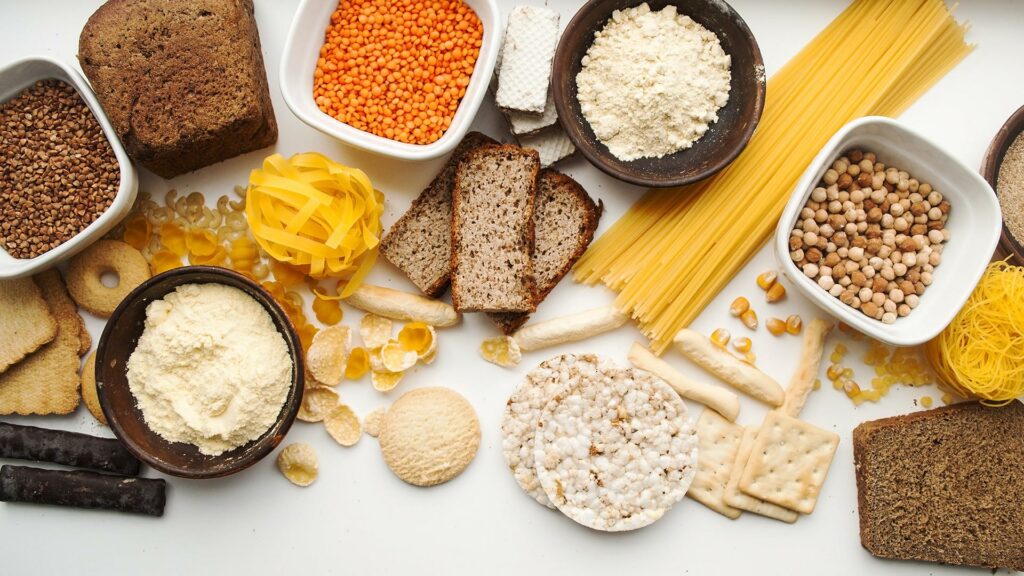Gluten is a group of proteins found in grains such as wheat, barley, and rye. It provides elasticity to dough and helps it hold its shape. While gluten is harmless for most people, it can cause health issues for individuals with gluten-related disorders. In this comprehensive guide, we will explore what gluten is, common foods that contain gluten, gluten-related conditions, and more.
Understanding Gluten:
Gluten is a mixture of two proteins: gliadin and glutenin. These proteins give dough its stretchy texture and help it rise during baking. Gluten is naturally present in certain grains, primarily wheat, barley, and rye. It is also found in products derived from these grains, such as bread, pasta, and baked goods.
Common Foods with Gluten:
- Several foods and food products contain gluten. Some common examples include:
- Bread and baked goods: Most types of bread, pastries, cakes, cookies, and muffins contain gluten unless specifically labeled as gluten-free.
- Pasta and noodles: Traditional wheat-based pasta and noodles are not gluten-free. However, gluten-free alternatives made from rice, corn, or quinoa are available.
- Cereals: Many breakfast cereals, including those made from wheat, barley, and rye, contain gluten. Look for gluten-free cereals made from gluten-free grains like corn, rice, or certified gluten-free oats.
- Beer: Most beers are made from barley, which contains gluten. However, gluten-free beer options are available, often made from alternative grains like sorghum or rice.
- Sauces and condiments: Some sauces and condiments, such as soy sauce, teriyaki sauce, and salad dressings, may contain gluten as a thickening agent. Look for gluten-free alternatives or read labels carefully.
- Processed and packaged foods: Many processed and packaged foods, including soups, sauces, snacks, and pre-made meals, may contain hidden sources of gluten. Always read ingredient labels and look for gluten-free certifications.
Gluten-Related Conditions:
Gluten-related disorders are a group of conditions triggered by the consumption of gluten. The most well-known gluten-related condition is celiac disease, an autoimmune disorder in which the ingestion of gluten leads to damage to the small intestine. People with celiac disease must strictly avoid gluten to prevent symptoms and long-term complications.
Non-celiac gluten sensitivity (NCGS) is another condition characterized by adverse reactions to gluten ingestion, without the presence of celiac disease or wheat allergy. Symptoms of NCGS can include gastrointestinal discomfort, fatigue, headaches, and brain fog. While the exact mechanisms are not fully understood, avoiding gluten-containing foods can help manage symptoms in individuals with NCGS.
Gluten-Free Diet:
For individuals with gluten-related disorders, adopting a gluten-free diet is necessary to avoid symptoms and promote intestinal healing. A gluten-free diet involves avoiding all sources of gluten, including wheat, barley, rye, and any products derived from these grains. Fortunately, there are many gluten-free alternatives available, such as gluten-free flours, bread, pasta, and cereals.
It’s important to note that a gluten-free diet is not necessary for individuals without gluten-related conditions. Gluten itself is not inherently unhealthy, and there is no evidence to suggest that avoiding gluten improves health or promotes weight loss in the general population.
Reading Labels and Cross-Contamination:
When following a gluten-free diet, it’s crucial to read food labels carefully. Look for products labeled as “gluten-free” or those that display a gluten-free certification symbol. Additionally, be aware of potential cross-contamination. Even small traces of gluten can trigger symptoms in individuals with gluten-related disorders. It’s important to avoid products that are processed in facilities that also handle gluten-containing ingredients.
Gluten-Free Cooking and Baking:
Cooking and baking gluten-free can be challenging, especially when it comes to achieving the desired texture and taste. Fortunately, there are various gluten-free flours and baking mixes available that can be used as substitutes for wheat flour. These include almond flour, rice flour, coconut flour, and gluten-free all-purpose flour blends. Experimenting with different recipes and techniques can help achieve delicious gluten-free dishes and baked goods.
Gluten in Medications and Personal Care Products:
Gluten can also be present in medications and personal care products, such as vitamins, supplements, and cosmetics. Individuals with gluten-related disorders should be cautious and choose gluten-free options when necessary. It’s advisable to consult with healthcare professionals or contact manufacturers to ensure that medications and personal care products are safe for consumption or use.
Beyond Gluten:
While gluten-related disorders are specific to gluten, some individuals may experience symptoms related to other components of grains. For example, individuals with wheat allergy react to proteins found in wheat but may not have an issue with gluten itself. In such cases, avoiding wheat and wheat-based products is necessary. Additionally, some individuals may have sensitivities or intolerances to other grains or food components, such as FODMAPs (fermentable oligosaccharides, disaccharides, monosaccharides, and polyols).
In conclusion, gluten is a group of proteins found in grains like wheat, barley, and rye. It is responsible for the elastic texture in dough and is commonly found in various foods. While gluten-related disorders like celiac disease and non-celiac gluten sensitivity require a gluten-free diet, individuals without these conditions can consume gluten without harm. It’s important to read labels, be aware of cross-contamination, and choose gluten-free options when necessary. Consultation with healthcare professionals is recommended for those with gluten-related disorders or concerns about gluten consumption.

